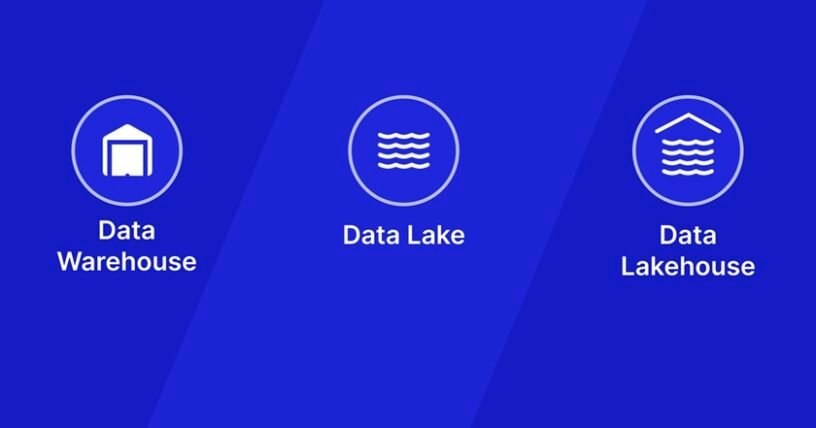Imagine your company is a bustling metropolis. Data, like traffic, streams in from everywhere – social media, customer records, financial transactions. You need a way to organize this data, analyze it, and extract insights to make smart decisions.
Traditionally, you had two options:
- The Data Lake: A massive, open storage space for all your raw data, like a giant digital warehouse. It’s cheap and scalable, but wading through unstructured data to find what you need is like navigating rush hour without a map.
- The Data Warehouse: A well-organized archive with structured data, like a filing cabinet for your most important reports. It’s great for business intelligence (BI) and quick access, but it can be expensive and inflexible for new data types.
Here’s where the data lakehouse comes in. It’s the trendy, up-and-coming district that merges the best of both worlds.
The Rise of the Data Lakehouse
Think of a data lakehouse as a planned city built around a lake. The lake (data lake) stores all your data, structured and unstructured. But around it, you have organized districts (data warehouse features) for specific uses:
- The Town Square (Metadata Layer): A central hub with detailed labels (metadata) on all your data, making it easier to find what you need.
- The Processing Plants (Transformation Layer): Factories that clean, transform, and structure your raw data before feeding it into different applications.
- The Business District (BI Layer): Analyzes structured data for insights on sales trends, customer behavior, and more.
- The Innovation Hub (Machine Learning Layer): A playground for data scientists to develop new models and applications using all the data in the lake.
Real-World Example: Retail Gets a Data Makeover
Let’s say you run a retail chain. In your data lakehouse, you can store everything from customer purchase history (structured) to social media mentions of your brand (unstructured).
- The BI Layer might reveal that customers who buy hiking boots also tend to buy granola bars. This helps you optimize product placement.
- The Machine Learning Layer could analyze social media sentiment to understand customer satisfaction and predict buying trends.
The data lakehouse empowers you to analyze all your data together, leading to more informed decisions and a competitive edge.
Why is the Data Lakehouse the New Buzzword?
Here’s what makes it so popular:
- Flexibility: Store all your data, no matter the format, for future uses you can’t even imagine yet.
- Cost-Effective: Leverage low-cost storage for raw data while keeping structured data optimized for faster analysis.
- Scalability: As your data grows, your lakehouse seamlessly expands to accommodate it.
- Unified Analytics: Break down data silos and get a holistic view of your business for better decision-making.
Data Lakehouse: Not a One-Size-Fits-All Solution
While the data lakehouse is a powerful tool, it’s not magic. Here are some things to consider:
- Security: With all that data, robust security measures are crucial.
- Governance: Clear guidelines are needed to ensure data quality and responsible use.
- Expertise: Building and managing a data lakehouse requires skilled professionals.
Ready to Dive into the Data Lakehouse?
The data lakehouse offers a compelling solution for businesses struggling to manage and analyze their ever-growing data. By combining flexibility, scalability, and cost-effectiveness, it paves the way for a data-driven future. So, are you ready to build your own data-centric metropolis?




1 Pingback